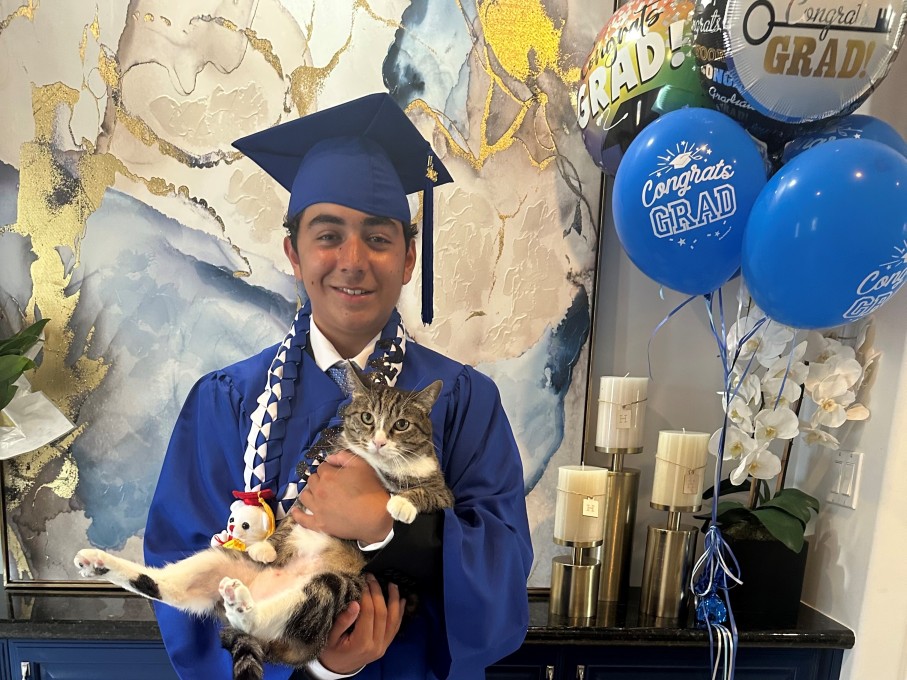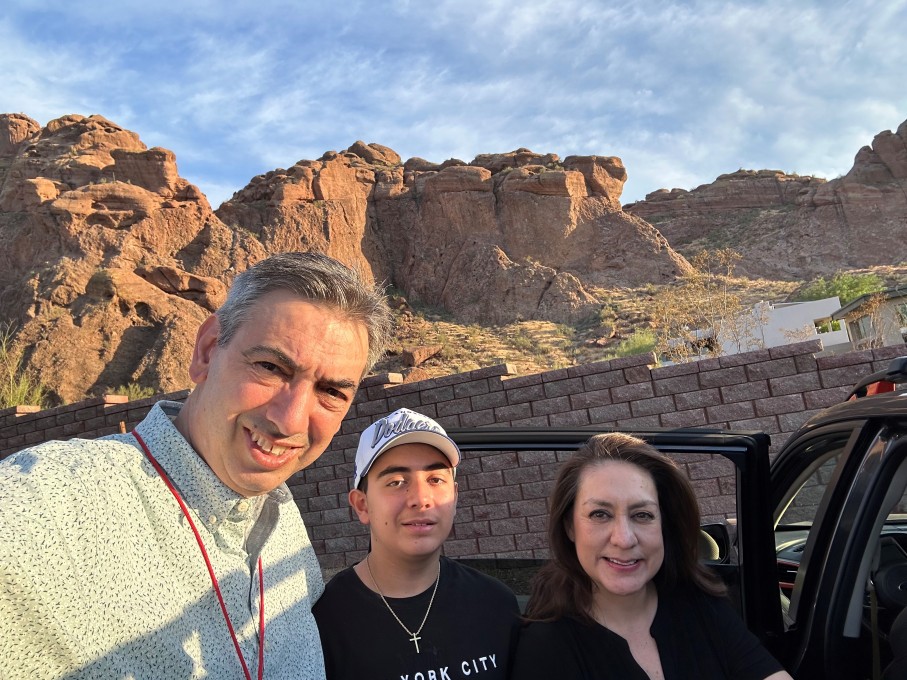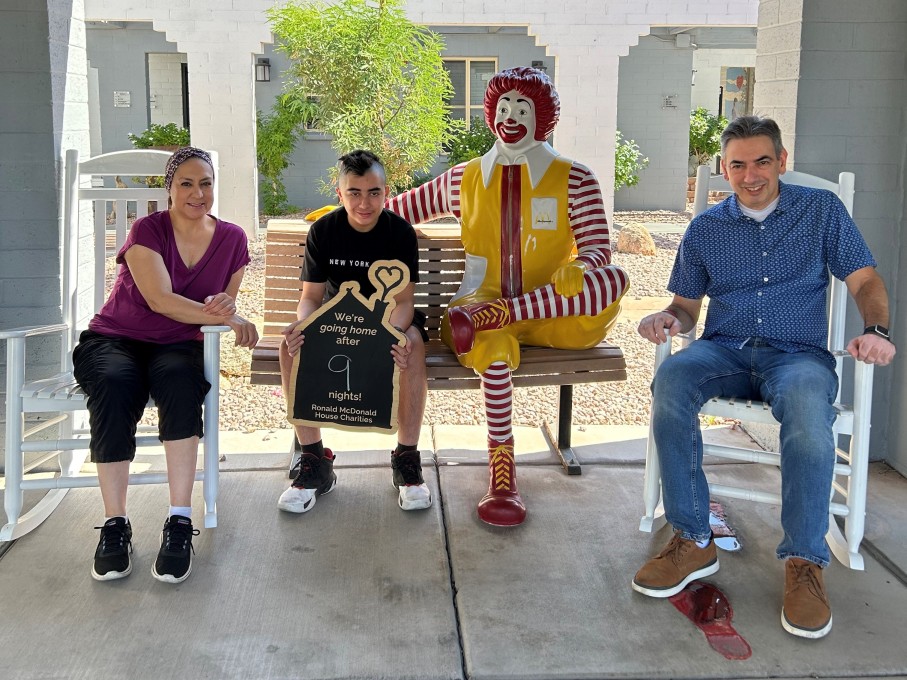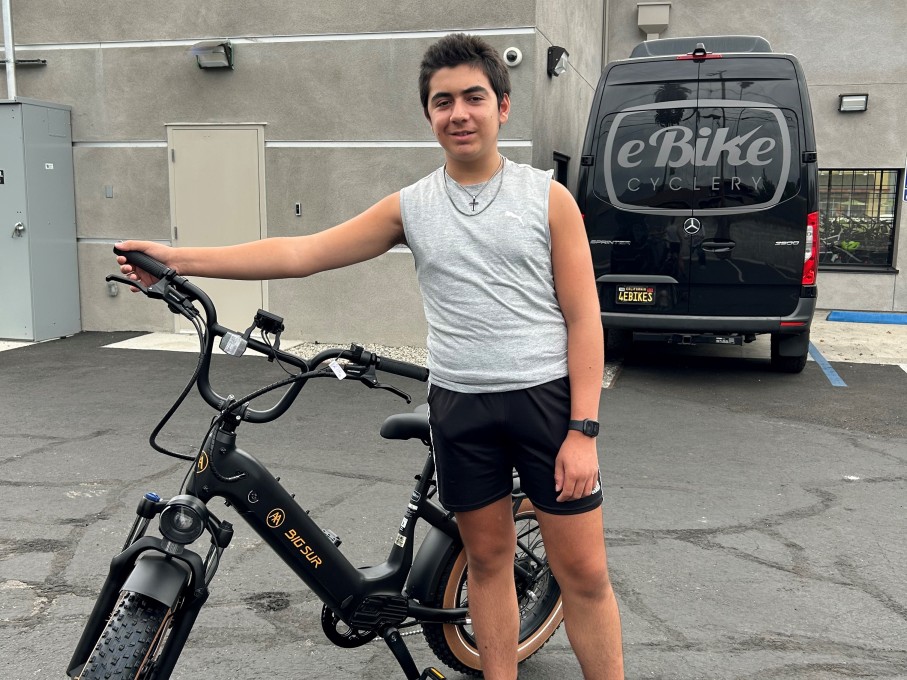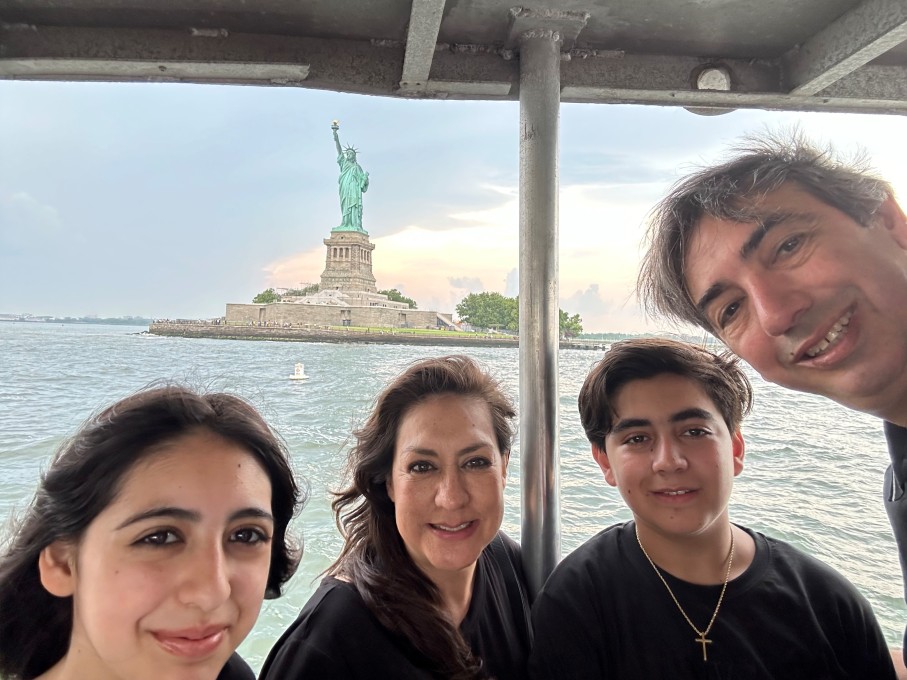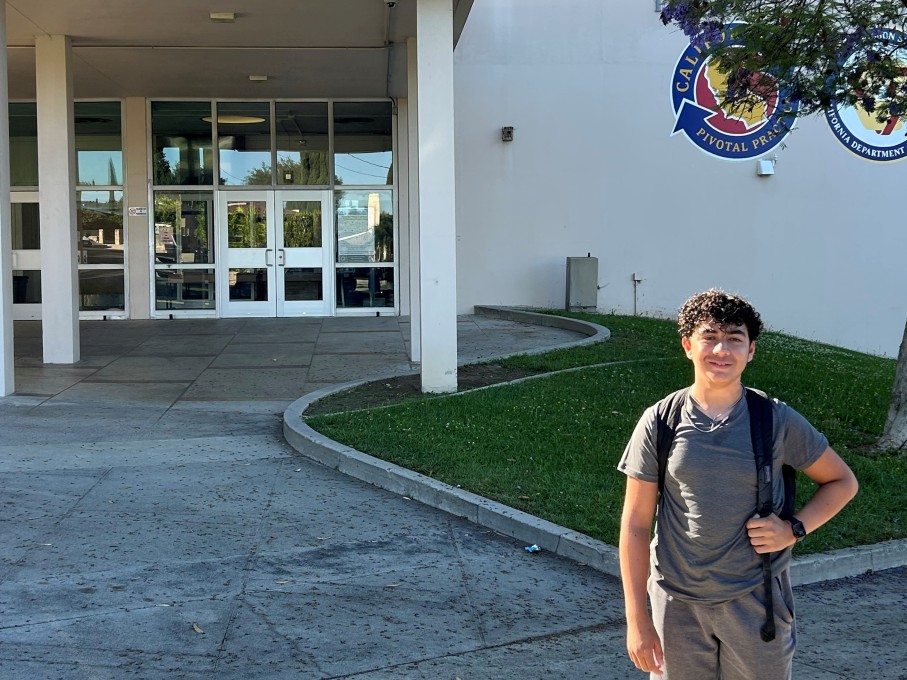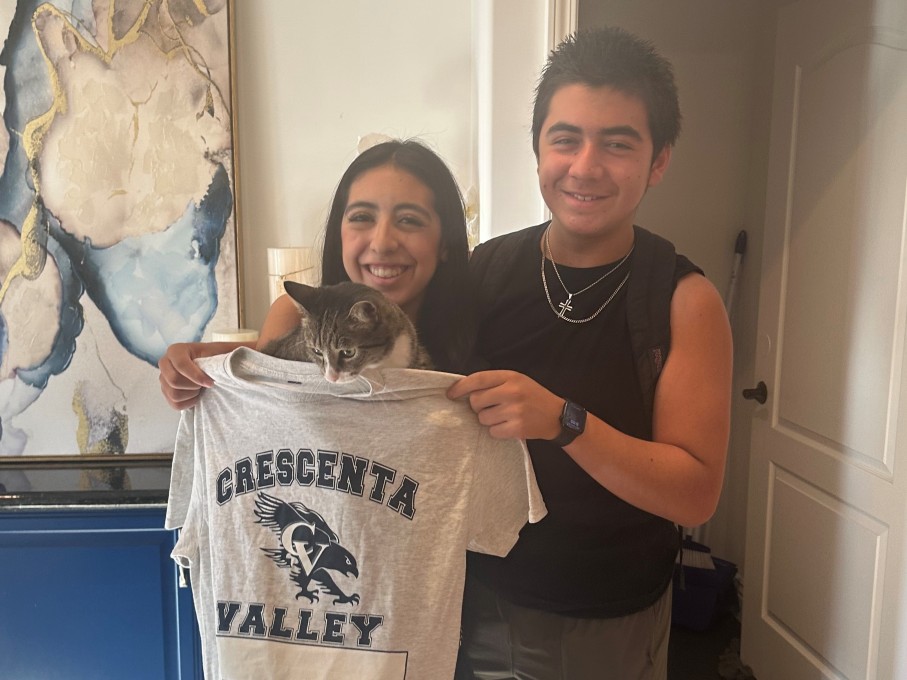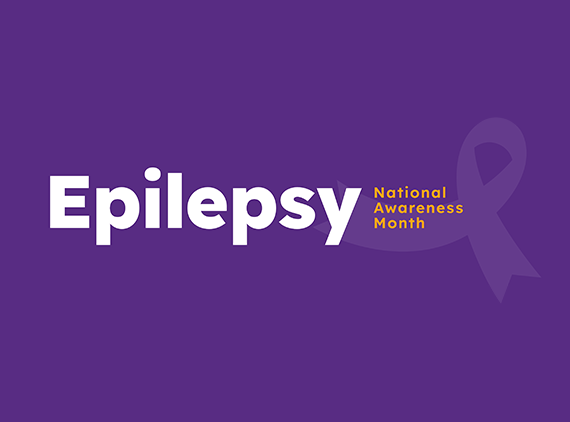Before his seizures began in 2020, Aris’ parents described him as a happy-go-lucky kid who had a talent for singing and sports. Out of the blue, around age 10, he began having episodes of nausea, delirium and confusion. As symptoms worsened – for example, asking for his mother, Sylvia, as she stood right in front of him – they started affecting his confidence.
Aris constantly worried about when his next episode would occur, said his dad, Saro. The family spent years with incorrect diagnoses and unnecessary medications before coming to Phoenix Children’s, where they found hope – and an immediate cure.
How Misdiagnoses Delayed Aris’ Epilepsy Treatment
The family, who lives in Los Angeles, first thought Aris’ issue was gastrointestinal because nausea topped his list of complaints. They spent the next several years visiting various specialists across Los Angeles. At first, Aris’ symptoms came and went for weeks, even months at a time, but eventually they occurred as often as once an hour. The severity increased, as well, leading to uncontrollable movements and disoriented speech. Eventually, Aris could not remember what had happened after an episode.
In May 2022, his pediatrician witnessed an episode and recommended behavioral health services. That fall, during the first week of 6th grade, Aris began having episodes through the night and into the morning, causing him to miss school. A school psychologist witnessed one and was the first to recognize it as an epileptic seizure.
Later that day, his parents took Aris to urgent care, where he had a seizure that caused his hands and lips to turn blue. He was taken to the nearest emergency department (ED), where he had two more seizures. The neurologist gave him Ativan, a medication that slows brain activity. Nurses recorded videos of his episodes, and he was admitted to the hospital.
Over the next few days, doctors ran several tests, including EEGs, and a CT scan. A neurologist told the family that the tests showed no seizure activity and Aris’ episodes were consistent with panic attacks. He was discharged with a referral to a psychiatrist.
Throughout that fall and winter, Aris’ psychiatric team prescribed a series of medications. During this time, Aris was having seizures night and day which were more frequent and intense.
Once Aris began cognitive behavioral therapy (CBT), his psychotherapist recognized that his symptoms did not fit his diagnosis of a panic disorder. Still, the family continued the medications prescribed by his doctors.
“Aris never complained,” Saro said. “He listened to the doctors and took his medications exactly as they said.”
By then, Aris was having intense, unpredictable seizures every day and attending only half days at school. Twice, he accidentally grabbed a classmate during a seizure. His parents decided it was too dangerous for him to attend school.
At home, they recall countless broken dishes and spilled drinks since Aris would grab anything in front of him during an episode. Sylvia and Saro were desperate to change course – to move away from medications that didn’t work and symptoms that only got worse – so Aris returned to a neurologist who repeated the scans and testing. By that point, he’d had hundreds of seizures.
In August 2024, an MRI showed a tumor on Aris’ temporal lobe. The family met with an oncologist who said the tumor was low grade, slow growing and did not appear malignant (cancerous). He adjusted Aris’ medications and planned to monitor the tumor over time. Surgery was not discussed as an option.
“August was the worst month of our entire lives,” recalled Sylvia. “Aris was supposed to be on the right anti-seizure medication, but he was having more seizures than ever — 80 that month. He couldn’t do anything on his own, not shower, not eat, not walk to one end of the house. It was unsustainable.”
On the recommendation of their family member, Dr. Raffi Simonian, Pharm. D., Sylvia and Saro sought a second opinion at Phoenix Children’s. It was a decision that would finally change everything.
Epilepsy Surgery at Phoenix Children’s Offers Immediate Relief
Within days of a referral from his pediatrician in Los Angeles, Aris had a video consultation with Jason Hauptman, MD, PhD, a pediatric neurosurgeon and division chief of Neurosurgery at Phoenix Children’s. Right away, Dr. Hauptman diagnosed Aris with refractory epilepsy, a drug-resistant form of the disease.
“Dr. Hauptman listened to us, and we showed him the MRI,” Saro said. “From that first appointment, he knew Aris’ diagnosis and knew what to do. He said the only way to resolve it would be to remove the tumor as soon as possible.”
Dr. Hauptman recommended they meet with Angus Wilfong, MD, division chief of Neurology and a renowned specialist in pediatric epilepsy, who met with them in person four days later.
“Aris started anti-seizure therapy, which often doesn’t work when structural lesions cause epilepsy,” explained Dr. Wilfong. He agreed with Dr. Hauptman that surgery would give him the best chance for a normal life.
“Everyone at Phoenix Children’s is on top of their game. The day we met Dr. Wilfong, he listened to everything Aris said and took notes for an hour. I broke down in tears, and Aris asked if I was OK. I told him, ‘These are tears of happiness.’ After years of suffering, Dr. Hauptman and Dr. Wilfong diagnosed and solved the problem in a matter of days. I can’t praise them enough.”
Two weeks later, Dr. Hauptman performed a temporal lobectomy to remove the tumor causing Aris’ refractory epilepsy.
Sylvia and Saro felt at peace during Aris’ surgery. “We knew we were in the right hands,” she said. “That night, I probably got the best sleep I ever had. I just knew he was fine.”
From the moment Aris met his care team at Phoenix Children’s, everything moved quickly. In less than three weeks, Aris’ parents went from that first virtual consultation to watching their son heal after surgery. The coordinated efforts between Dr. Hauptman, Dr. Wilfong and the entire team meant no time was wasted — every step, from additional imaging to pre-surgical testing, moved quickly and seamlessly.
“After years of waiting and wondering, Phoenix Children’s gave us answers and a plan within days,” Sylvia said. “We finally felt hope again.”
Just 19 days after their first appointment, Aris’ tumor was removed, and his seizures stopped completely.
What Parents Should Know About Drug-Resistant Epilepsy
Each year, tens of thousands of children in the U.S. are diagnosed with epilepsy, and more than 1 million people live with uncontrolled forms of the disease.
“Epilepsy affects about 1% of the population, and 30% of pediatric cases don’t respond to two or more medicines,” Dr. Hauptman explained. “That is called refractory epilepsy. The likelihood that additional medications will help is less than 5%. For Aris, surgery offered more than an 80% chance of a cure.
“One study compared kids who had epilepsy surgery with those who did not. Three years after surgery, the quality of life was the same as kids who never had epilepsy. That is incredible.”
Thankfully, more kids are being helped by the experts at the Barrow Neurological Institute at Phoenix Children’s as word spreads about the life-changing epilepsy surgeries being performed at the Southwest’s leading epilepsy treatment center.
“Aris’ tumor was in his amygdala, where fear and terror come from,” Dr. Wilfong said. “He was having seizures of pure terror. I cannot think of something more torturous than that.”
Some children aren’t candidates for this type of surgery but may qualify for other treatments, such as neuromodulation, which uses electrical stimulation to control seizures. These treatments can also be life changing.
Life After Epilepsy Surgery
“The days of considering epilepsy a solely medical disease are behind us,” Dr. Hauptman said. “Surgery can completely change a child’s life trajectory. Without surgery, Aris might not have finished high school, been able to work or drive. The difference in quality of life before and after surgery is profound.”
Today, Aris is back in school, has started driver’s education and is doing things by himself. At 15, he is seizure-free, tumor-free and thriving. The chances of the tumor returning are minimal, although he will continue regular MRIs with his oncologist.
“With his epilepsy cured, Aris is now a typical teenager,” said Dr. Wilfong. “He can do anything he sets his mind to.”
The Phoenix Children’s doctors offered to help the family find a care team back home for follow-up visits, but the family declined. Instead, they gladly drive six hours from Los Angeles to Phoenix for every follow-up visit and encourage other families to seek second opinions at Phoenix Children’s.
“Surgery is the easiest part of what I do,” Dr. Hauptman said. “My real job is being an advocate and educating families and physicians about brain surgery. With modern techniques, recovery can be remarkably fast. Aris went home in just three days.”
More Kids Can Find Hope Through Epilepsy Treatment at Phoenix Children’s
Epilepsy can be relentless – but it is often treatable with the right care team.
“What I’ve learned is you have to find the right specialist,” Saro said. “You must advocate for your child. We didn’t lose hope or believe this was Aris’ fate. Phoenix Children’s saved Aris’ life — they saved our lives. It is nothing short of a miracle.”
Learn more about the Phoenix Children’s Epilepsy Program.
